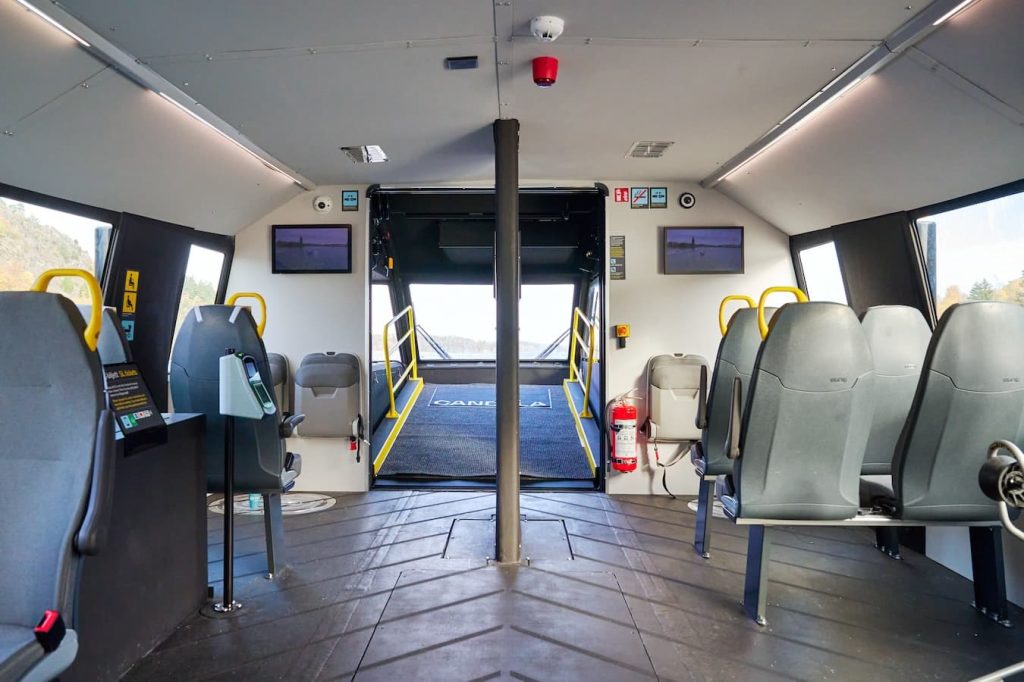
What if your morning commute didn’t involve gridlock on the 395 or the Orange Line crawl, but instead meant silently flying over the Potomac River at 30 knots? That’s exactly what Stockholm-based Candela is bringing to Washington D.C. this week with the U.S. demo debut of its flying electric boats.
While it doesn’t appear to be a permanent route nor make use of the company’s latest flagship commercial vessel, the P-12 shuttle, the demonstration set up near the Swedish embassy will illustrate just how effective the alternative commuting method truly is.
Starting October 17th, Candela will be showcasing media test rides on the Potomac using its C-8 flying vessel to demonstrate how its revolutionary electric hydrofoil ferry – the Candela P-12 – could transform city commutes. With wings hidden beneath the water and a high-tech flight controller regulating the ride, the P-12 lifts out of the water and literally flies above the surface, reducing drag by 80% and gliding without creating a wake.
The demonstration underscores how this level of speed and efficiency could actually change how people move around the D.C. metro area. A typical commute from Georgetown to Reagan Airport? By car, that’s around 20 minutes. On public transit, 37. On the P-12? Just six minutes. Similarly, a water ride from Alexandria to The Wharf would be a quick and quiet 10-minute journey – likely faster than your rideshare app can even find a driver during rush hour.
The Candela P-12 is more than just a speedy commuter; it’s also quiet, clean, and surprisingly comfortable. Its computer-controlled hydrofoils make for a ride that’s smooth enough to prevent seasickness, and the onboard C-POD electric motor hums along with no noise or vibration. With no slamming into waves and no diesel fumes to choke on, the whole thing feels more like riding a luxury train than a boat.

And while this might sound like the kind of futuristic tech you’ll hear about once and never again, Candela is already proving this model works. In Stockholm, the P-12 has already been integrated into the city’s public transport system, where it’s cut some routes’ travel times in half and delivered a quieter, cheaper, and greener commute. Similar projects are in the works for Lake Tahoe, Mumbai, Thailand, and Saudi Arabia – with more than 40 boats already on order, making it the best-selling electric passenger vessel in the world.
Candela says operating costs are about 60% lower than diesel-powered vessels, which puts them in line with land-based mass transit options like buses. In cities like D.C., where shoreline erosion and speed restrictions limit traditional ferries, the P-12’s wake-free cruising means it can get exemptions and run at high speeds even in no-wake zones. That opens up a whole new layer of transport.
“We’re not merely replacing diesel ferries — we’re enabling a new layer of transport by utilizing the underused waterways,” said Gustav Hasselskog, Candela’s founder and CEO. “We’re already in discussions with several U.S. companies that see the potential of using flying electric vessels to bypass congestion.”


The Washington D.C. demo is timed to coincide with the Swedish Green Transition Summit, a forum focused on sustainable innovation, and will run through October 23rd from a launch site adjacent to the Swedish Embassy. It’s part marketing, part diplomacy, and part real-world proof of concept that urban waterborne transit doesn’t have to be slow, loud, or dirty.
For a city surrounded by rivers and plagued by congestion, Candela’s pitch is clear: don’t pave more roads – just fly over the water. If the P-12 delivers in D.C. the way it has in Sweden, this could be the start of an entirely new commute for many more U.S. cities.

FTC: We use income earning auto affiliate links. More.








